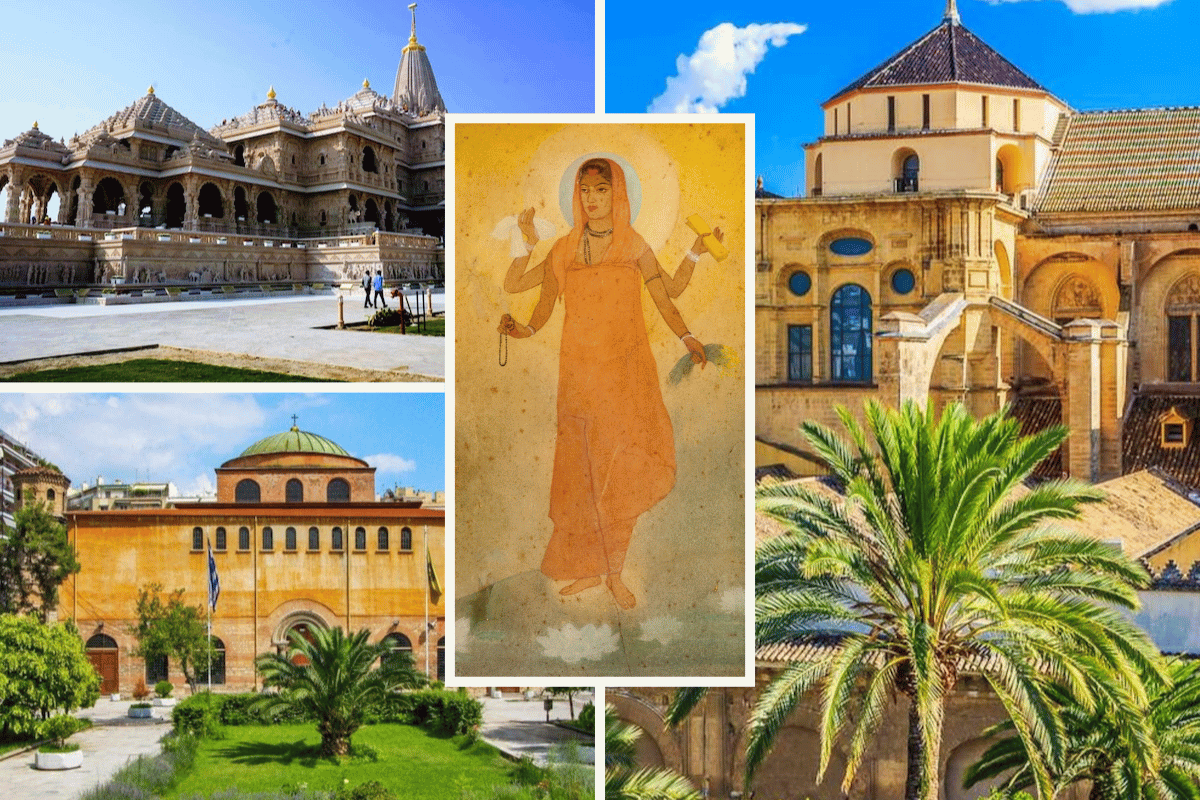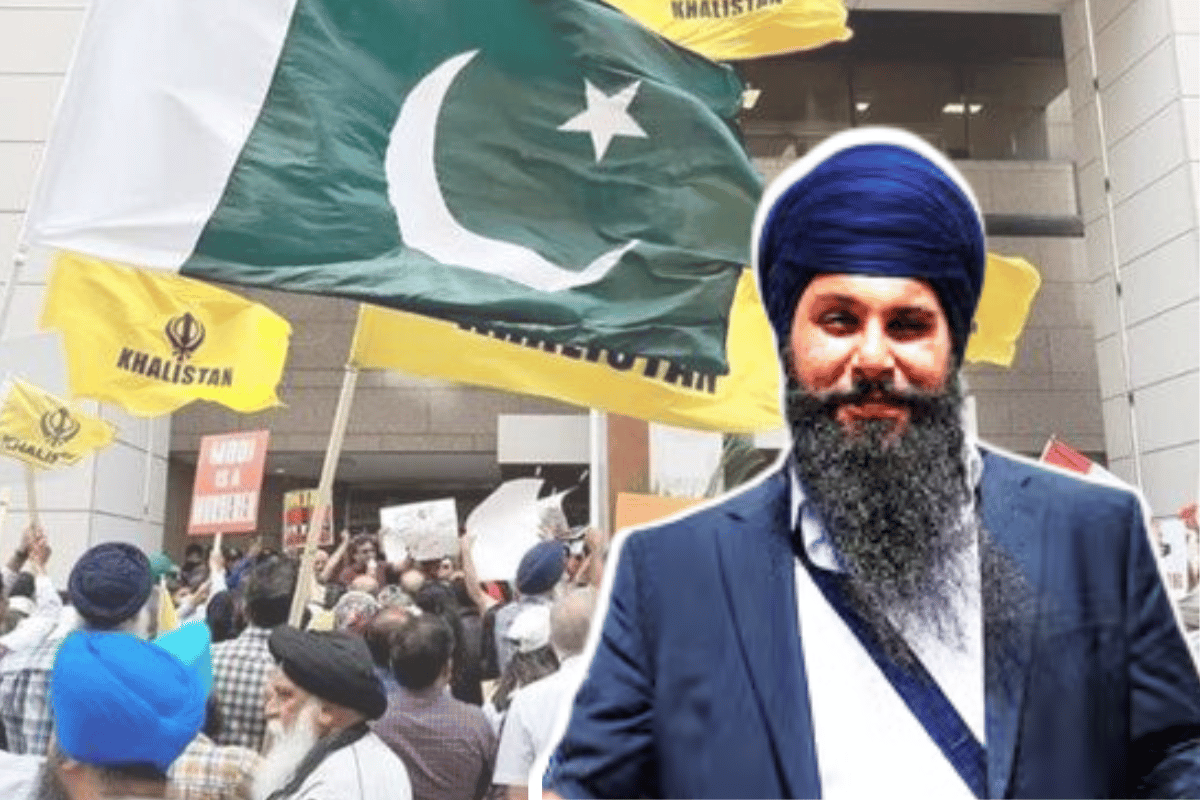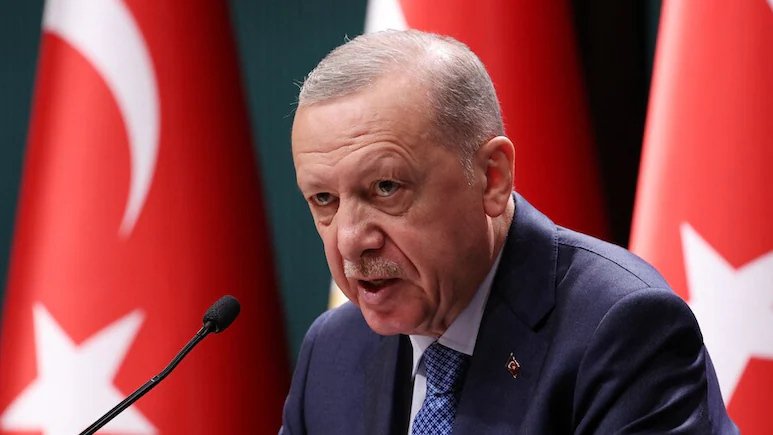
The Hindu community in the United Kingdom is one of the oldest and most vibrant immigrant communities, with a rich cultural, religious, and social heritage.

Despite their longstanding contributions to British society, the community has increasingly been subjected to systemic persecution and marginalisation.
This form of persecution is not random but follows a discernible and escalating pattern, fueled by identity-based divisions, including religion, ethnicity, and political beliefs. This article explores the various dimensions of systemic persecution faced by British Hindus, offering specific examples of how these challenges manifest and highlighting the potential dangers of such systemic discrimination if left unaddressed.
Understanding Systemic Persecution
Systemic persecution refers to the sustained mistreatment of a particular group within a society, often driven by deep-seated biases and prejudices. Unlike random acts of violence or individual discriminatory incidents, systemic persecution is embedded in the structures of society and is reinforced by governmental, social, and media narratives. In the case of British Hindus, systemic persecution is most evident in media portrayal, discriminatory policies, hate crimes, institutional bias, and increasing physical violence. This process of marginalisation often follows a predictable course that escalates if not recognised and addressed early.
Identification and Marginalisation of Hindus in the UK
The initial phase of systemic persecution often involves the identification and marginalisation of a community through negative stereotypes and biased portrayals. In the UK, the Hindu community has increasingly faced misrepresentation, particularly regarding political and religious issues tied to the Indian subcontinent. A prime example of this was the unrest between Hindu and Muslim groups in Leicester in 2022, which saw the community unfairly depicted as aggressors. Despite the presence of orchestrated misinformation campaigns that fueled tensions, certain sections of the media disproportionately blamed Hindus for the violence, ignoring evidence that highlighted the complexity of the situation.
Additionally, in 2023, during the celebration of Indian Independence Day in London, a violent mob of pro-Pakistan and Islamist groups targeted British Hindus. These individuals harassed and assaulted those celebrating their heritage, yet mainstream media coverage largely failed to highlight the religious and ethnic targeting of the victims. The failure of the media to accurately report these events perpetuates a distorted narrative that further marginalizes Hindus, painting them as perpetrators of violence rather than victims.
Discriminatory Policies and Legal Restrictions
Discriminatory policies and practices further perpetuate systemic persecution, excluding Hindus from full participation in British society. One such issue is the ongoing debate surrounding caste legislation. Some activists have sought to have caste recognised as a form of discrimination under the Equality Act 2010. While the intention behind this legislation may be to combat discrimination, many British Hindus argue that such laws unfairly target their community. These debates often lead to increased scrutiny of Hindu businesses and religious institutions, reinforcing negative stereotypes and fueling further discrimination.
In the realm of education, British Hindu students have faced institutional biases that marginalise their voices. A particularly telling case is that of Rashmi Samant, who was forced to resign as President of the University of Oxford Student Union in 2017 after being subjected to anti-Hindu abuse. Her case highlighted the deep-rooted prejudice within certain student activist circles, where Hindu students are often excluded from political discourse and activism. This pattern of exclusion reinforces the systemic nature of discrimination faced by Hindus in the UK.
Harassment, Violence, and Hate Crimes
Once negative perceptions take root, they often lead to increased instances of harassment and violence. According to data from the UK Home Office, hate crimes against Hindus have been on the rise, particularly after incidents such as the Leicester unrest in August and September 2022.
In 2023, the Swaminarayan Temple in Leicester was defaced with anti-Hindu graffiti, symbolising the increasing hostility towards Hindu places of worship. Temples and religious centres, which serve as cultural and spiritual hubs, have increasingly become targets of vandalism and violence, reflecting the broader societal tensions.
In March 2023, the Indian High Commission in London was subjected to a violent attack by pro-Khalistani extremists, who broke windows, tore down the Indian flag, and attempted to storm the building. The UK authorities’ delayed and insufficient response to the attack raised concerns about the safety of Hindu community institutions and the tolerance of anti-Hindu sentiment. The lack of action by law enforcement not only allowed the attackers to proceed with their actions unchallenged but also reinforced the perception that Hindu institutions are not given equal protection under the law.
Moreover, the attack on Hindu celebrants during Indian Independence Day in London in 2023 further exemplified the targeting of British Hindus. Peaceful Indian celebrations were marred by violent mobs who harassed participants simply for displaying the Indian flag. This incident highlighted how anti-Hindu sentiment has become increasingly visible in public spaces, with Hindus being unfairly associated with political tensions abroad.
Institutionalized Oppression
The process of systemic persecution becomes even more entrenched when bias is institutionalised, affecting not only individuals but also entire communities. The media has played a significant role in perpetuating negative portrayals of Hindus, especially in their coverage of South Asian geopolitics. Major outlets like the BBC have been accused of disproportionately highlighting the negative aspects of Hindu communities while downplaying or ignoring the biases against them. This form of institutionalised oppression extends beyond the media to other areas of British life, where Hindu festivals like Diwali face stricter regulations than those of other religious groups. These restrictions often target the cultural practices of Hindus, such as limits on noise levels or firework usage, creating an environment where their cultural expression is restricted in ways that other communities do not face.
Hindu temples and community centres also receive less support than other religious institutions. Despite rising incidents of violence against Hindu places of worship, there has been no comparable allocation of funds for their security, as seen in the financial protections provided for Muslim and Jewish communities. In 2024, over £117 million was allocated to provide security funding for Muslim communities, while more than £70 million was set aside for the Jewish community. However, the Hindu community has not seen similar measures, leaving temples vulnerable to attack without adequate protection. This disparity in funding demonstrates the lack of institutional support and recognition for the specific needs of the Hindu community in the UK.
The Impact of Demographic Shifts: The Case of Southall
One of the most striking examples of systemic persecution in the UK is the changing demographic landscape of certain neighbourhoods. Southall, once a thriving hub for the Hindu and Sikh communities, has seen a dramatic shift in its demographic composition over the past few decades. Following the Partition of India in 1947 and the expulsion of East African Indians in the 1970s, Southall became a predominantly Hindu and Sikh area. However, in recent years, Southall has transformed into a predominantly Muslim area, leading to cultural displacement and a sense of alienation among long-established Hindu and Sikh residents.
Several factors have contributed to this shift. The rise of a largely Pakistani Muslim population has changed the local cultural and religious landscape, with many Hindu families feeling increasingly unwelcome. Reports suggest that incidents of intimidation, cultural clashes, and the dominance of religious practices, such as the loudspeakers from mosques, have made the area uncomfortable for many Hindus. Furthermore, property sales in Southall have been driven down by the changing demographics, with many Hindu and Sikh homeowners selling their properties at lower-than-market values, sometimes under pressure from property dealers who purchase homes in bulk. The migration of these communities out of Southall highlights the impact of demographic shifts on the Hindu community, forcing them to leave areas they once called home.
Emerging Trends in Wembley and Harrow
A similar pattern is now emerging in Wembley and Harrow, traditionally strongholds of the Gujarati Hindu community. In these areas, the influx of South Asian Muslims has led to significant cultural changes, including the rise of mosques and halal businesses. These shifts have made some Hindu families feel increasingly alienated in neighbourhoods they once dominated. As in Southall, reports suggest that some Hindus are selling their properties at lower-than-market prices and relocating to areas with more balanced demographics, such as Northwood, Pinner, or even outside London altogether. The sense of cultural displacement is amplified by rising security concerns and increasing incidents of anti-Hindu sentiment in local schools and workplaces.
Local authorities in these areas have been slow to address the growing concerns of Hindu residents. Unlike other minority communities, Hindus lack strong political representation in local councils, which means their concerns are often overlooked in policy decisions. This lack of representation has exacerbated the sense of marginalisation felt by Hindus, further contributing to their migration away from these areas.
The Role of Religious and Political Movements in Perpetuating Persecution
A significant aspect of the systemic persecution of British Hindus is the involvement of religious and political movements that contribute to the vilification and discrimination against the community. One of the most concerning aspects of this trend is the rise of radical political movements and ideologies that exploit religious differences, particularly in the context of the global conflict between India and Pakistan.
In recent years, British Hindus have faced increasing hostility from political factions, particularly those sympathetic to the pro-Pakistani and pro-Khalistani movements. In 2023, the UK’s growing association with the Khalistani movement led to clashes between supporters of Khalistani separatism and the Hindu community. The UK government’s hesitancy to label these groups as extremists further exacerbated the hostility directed at British Hindus. The Khalistani movement’s resurgence has been particularly problematic for the Hindu community, as it often involves violent rhetoric and activities that are directed at Hindu individuals, particularly those who have roots in India.
In addition, political movements affiliated with radical Islamism have made inroads in the UK, pushing an anti-Hindu agenda under the guise of religious or geopolitical activism. The rise of groups like “Friends of Kashmir” or “Stand with Pakistan” has fueled anti-Hindu rhetoric, which often finds its way into broader societal debates, from university campuses to the political discourse. For instance, in 2022, a pro-Pakistani rally in Birmingham saw inflammatory slogans calling for the persecution of Hindus and the destruction of Hindu temples. Such actions often go unchallenged by the authorities, allowing a culture of hate to thrive.
This radicalization within certain political circles has put British Hindus in a difficult position. On the one hand, they feel the pressure of political groups that demand loyalty to certain nationalist causes, while on the other hand, they are vulnerable to increasing threats from those who aim to erase or undermine their identity.
The Media’s Role in Perpetuating Anti-Hindu Narratives
The role of the media in shaping public perceptions of British Hindus cannot be overstated. The media’s portrayal of Hindus in the UK has increasingly become skewed, often presenting them as the “other” in a racialised discourse about global geopolitics. This portrayal, at times, contributes to anti-Hindu sentiment by painting the community as politically motivated or aligned with foreign powers in ways that other ethnic or religious groups are not subject to. The consistent portrayal of Hindus as a monolithic and politically charged group, rather than as individuals with diverse perspectives, has contributed to their marginalisation.
For instance, in the wake of the 2019 Indian general elections, British media outlets, such as The Guardian and The Independent, often focused on the rise of the Hindu nationalist movement in India. While legitimate concerns about the growing influence of Hindu nationalism in India were discussed, these discussions were often framed in a way that unjustly tied British Hindus to the politics of the ruling Bharatiya Janata Party (BJP) in India. As a result, British Hindus were increasingly viewed with suspicion and hostility, both by other communities and by elements of the media.
Furthermore, during coverage of the Kashmir issue, many UK media outlets framed Hindu nationalism as synonymous with the Indian government’s stance on the disputed region. This led to the demonisation of British Hindus, as many of them have deep ties to the region and its culture. The lack of nuance in such coverage has fed into the negative stereotypes that continue to harm British Hindus.
Social Media and the Amplification of Anti-Hindu Sentiment
The rise of social media has also played a significant role in the spread of anti-Hindu sentiment in the UK. Platforms like Twitter, Facebook, and Instagram have become breeding grounds for hate speech and misinformation, with certain groups and individuals using these platforms to promote narratives that incite violence and hatred against Hindus. In 2022, during the controversy surrounding the BBC’s coverage of the Kashmir conflict, social media was flooded with anti-Hindu hashtags and calls for violence against Hindus in the UK.
What makes the situation more alarming is the tendency of social media platforms to amplify such content. Algorithms often prioritise divisive and inflammatory posts, leading to the normalisation of hate speech and reinforcing harmful stereotypes about Hindus. Even when hate speech is reported, the response from social media companies has often been sluggish, further emboldening the perpetrators of such content.
One notable example is the increase in online abuse against Hindu students in the UK, particularly those who are active in advocating for their community’s rights. In 2021, several Hindu students were targeted with violent threats after voicing support for their religious identity or challenging anti-Hindu rhetoric on social media. These incidents, largely ignored by authorities, reflect the broader problem of harassment and discrimination that British Hindus face in both the digital and real worlds.
The Legal and Political Implications
While systemic persecution affects all areas of life, the lack of legal redress for British Hindus only serves to deepen the problem. One of the key barriers to addressing anti-Hindu discrimination is the absence of legal recognition for the community’s unique challenges. While the UK government has taken steps to address Islamophobia, antisemitism, and racism, there has been little recognition of anti-Hindu sentiment as a distinct form of discrimination. This legal gap has resulted in limited recourse for Hindus who face violence, harassment, and discrimination based on their religion or ethnicity.
In 2023, the UK government’s Equality and Human Rights Commission (EHRC) was criticised for failing to include Hinduism as a category in its report on hate crime trends. Without official recognition, the scope for legal action against perpetrators of anti-Hindu crimes remains limited, and the lack of data on anti-Hindu hate crimes only reinforces the notion that the issue is not important enough to warrant attention.
Additionally, the political underrepresentation of British Hindus further compounds their vulnerability to systemic discrimination. While other minority communities have gained significant political representation in Parliament, Hindus remain largely absent from positions of power and influence. This lack of representation translates into fewer policies that address the specific needs of the Hindu community. For instance, despite increasing attacks on Hindu temples, the UK government has not introduced measures to bolster security around places of worship as it has for Muslim mosques.
The Path Forward: Building Solidarity and Addressing Systemic Bias
Addressing the systemic persecution of British Hindus requires a multi-pronged approach. First and foremost, it is essential for the UK government to officially recognize anti-Hindu discrimination as a distinct form of hate crime. This would involve revising current hate crime legislation to ensure that the legal framework adequately addresses the specific challenges faced by Hindus. Furthermore, the government must make a concerted effort to promote interfaith dialogue and understanding, creating platforms where Hindus can share their experiences without fear of retribution.
Community organisations also have a pivotal role to play. Grassroots movements, particularly those led by young Hindus, must continue to advocate for the recognition of their rights and for increased political representation. In addition, Hindu advocacy groups should work in coalition with other marginalised communities to build solidarity and strengthen their collective voice against discrimination.
Finally, the media must take responsibility for its portrayal of British Hindus. Journalists, editors, and media outlets need to challenge the harmful stereotypes and sensationalist reporting that contribute to the marginalisation of the Hindu community. This requires a commitment to balanced and nuanced reporting, free from the influences of political or ideological agendas.
Conclusion
The systemic persecution of British Hindus is a growing issue that threatens not only the well-being of the community but also the fabric of British society as a whole. From media misrepresentation to hate crimes, discriminatory policies, and institutional biases, British Hindus are subjected to a complex and multifaceted form of oppression. However, by acknowledging the problem, amplifying the voices of those affected, and working toward legal, social, and political reforms, it is possible to begin dismantling the systems of bias that allow such persecution to persist. The future of British society depends on the ability to create an inclusive environment where all communities, including Hindus, can thrive without fear of discrimination or violence.
Appendices
- Appendix 1: The Tragic Case of Bhim Kohli: A Hate Crime and the Broader Implications of Youth Violence in Leicester
- Appendix 2: The Leaked Home Office Report: The Misrepresentation of Hindu Nationalism and Its Impact
- Appendix 3: Attack on Durga Bhawan Temple in Smethwick – A Case of Rising Intolerance
- Appendix 4: The Rashmi Samant Case – A Hindu Perspective on Identity, Politics, and Public Scrutiny
- Appendix 5: Attempt to Introduce Caste Legislation – A Precedent for Institutionalised Targeting of British Hindus









